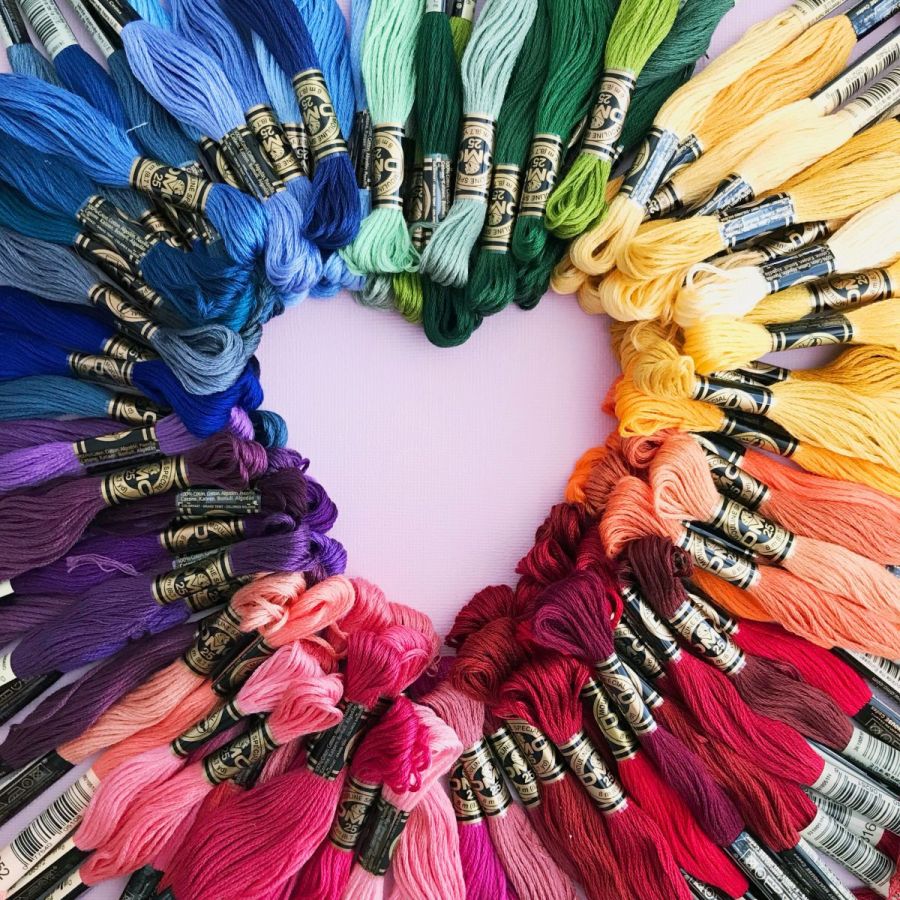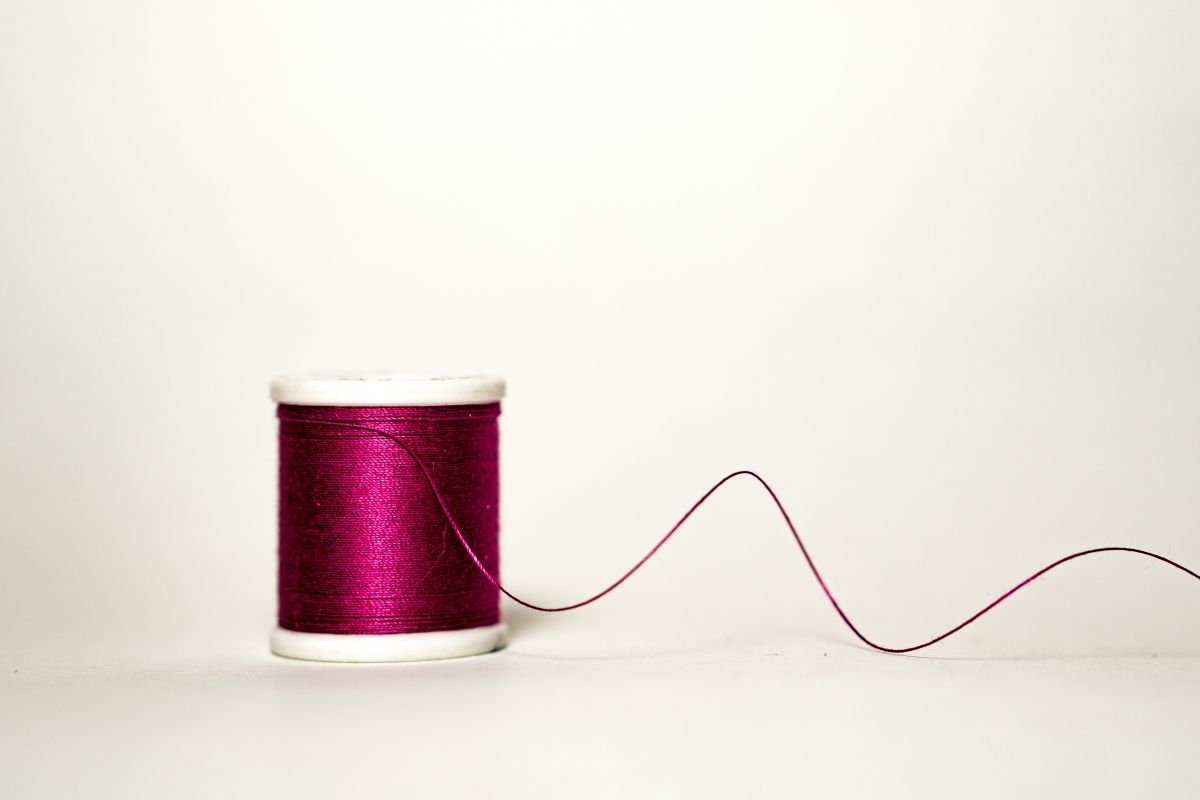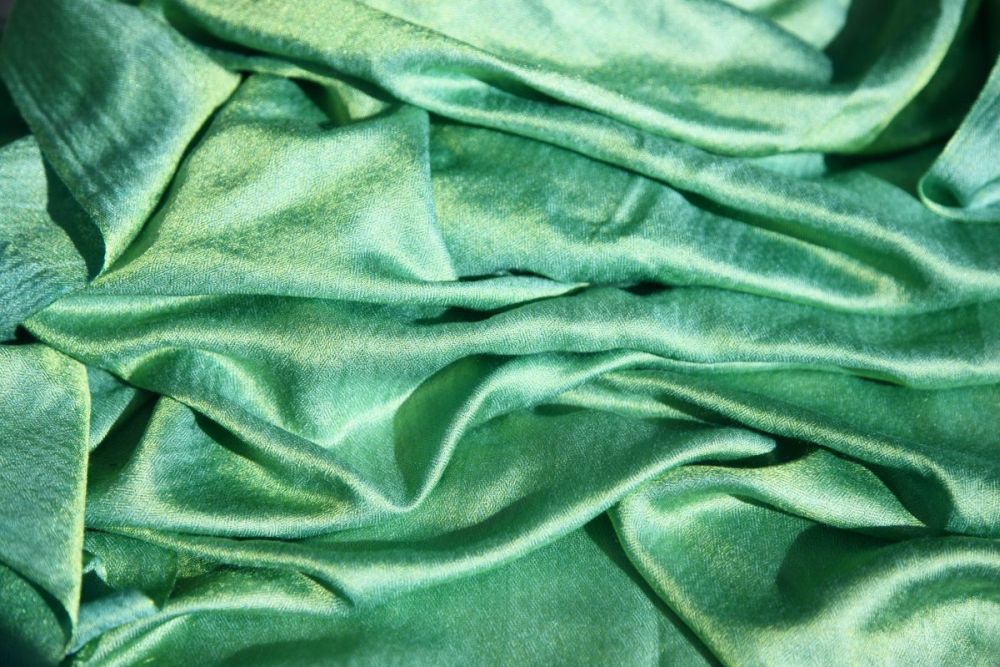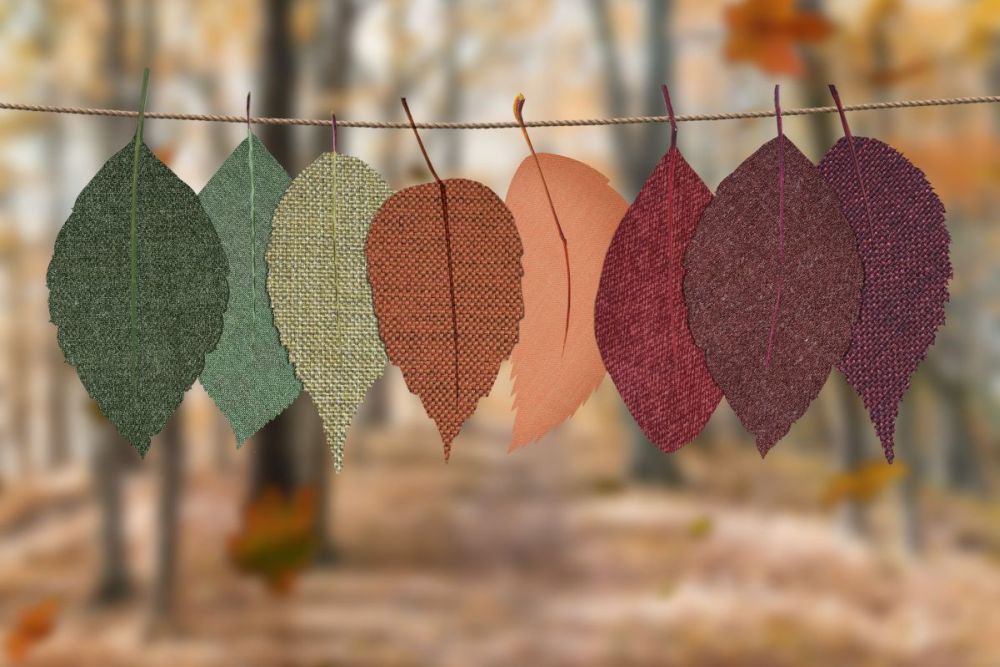We compare cotton and nylon to find the best and most affordable textiles for our undertaking. Most of us know the basics about the types of fabrics with which we are most experienced and at ease. When we encounter a new style or texture in a textile, we will research its specifics. But how well do we know even the most commonplace fabrics? Cotton and nylon, the two most ubiquitous and fundamental textiles in modern use, have many applications.
Key Difference – A Comparison between Cotton and Nylon
The textile industry makes extensive use of both cotton and nylon as fibres. Cotton is a natural fabric harvested from the cotton plant, Nylon, on the other hand, is a man-made fibre produced from dicarboxylic acid and diamine.
Exactly What Is Cotton?
Cotton, because of its low cost and diverse applications, is one of the most commonly utilised natural fibres in the manufacturing industry. Cotton is a natural fibre harvested from the cotton plant's seeds. In its make-up, you'll find pectin, cellulose, wax and water. Some of the many items that are made from cotton are dresses,T-shirts, towels, underwear, robes, and more.
This fabric is perfect for the warmer months because of how airy, light, and comfortable it is. Cotton clothing is great for hot weather, whereas other textiles may trap heat and make you feel uncomfortable. That's why it's used to create easy-to-wear, versatile garments. Cotton is safe to wear even by people with sensitive skin because it comes from a natural fibre.
There are pros and downsides to using cotton. It can stretch and wrinkle because it's made entirely of natural fibres. Therefore, additional care must be taken with cotton clothing. Avoid shrinkage by washing in cold water and ironing on high heat to remove creases. A dryer's heat setting can ruin a garment if used incorrectly. When weaving, it is usual practise to blend cotton with other fibres like linen, polyester and rayon to create a stronger longer-lasting fabric.
Nylon—What is it?
Nylon is manufactured using diamine and dicarboxylic acid, both synthetic amino acids. It is essential to the operation of many textile factories. Swimsuits, athletic gear ,leggings and stockings are just some of the garments that might benefit from nylon fabric. Bags, rope, tents, parachute fabric, tyres, rugs, tyres and a plethora of other things are all made from nylon. In the laboratory of Wallace Carothers, DuPont developed nylon. Because normal fabrics like silk and cotton were in short supply during the war, it quickly became a popular alternative.
Due to its low absorption rate, nylon is frequently used for swimwear and other types of athletic apparel that are worn in damp conditions. Compared to natural fibres like cotton and silk, it is more budget-friendly and requires less upkeep. It keeps its form after washing and looks as good as new. It can withstand attacks from viruses and bacteria, too. Nylon is an excellent material for clothing since it is long lasting and soft against the skin.
FAQs About Nylon And Cotton
The fashion saying goes, the tighter to the body the less breathable the material. That saying holds true for nylon and cotton. While some cotton may be woven to be tight to the body, it is still more breathable than nylon. That is one of the drawbacks of synthetic materials.
They just don't breathe that well and cannot match up with cotton or other natural fibers in this category. Nylon is made to be close to your skin as it wicks away moisture quite well but that and its tight fibers mean that your body will get hotter when wearing this fabric.
Since cotton can be woven or knitted into different weights, thicknesses and has a natural ability to breathe, it is the better fabric here. Nylon is more for those activities that require a lot of physical movement like cycling, team sports, swimming while cotton handles how you look after the games are over.
It stands to reason that if cotton breathes well it is not going to keep you as warm as other fabrics will. This is true in this category as cotton needs layers to keep you as warm as nylon can. Nylon may be able to wick away moisture and keep you drier but it does not let the heat out and allow you to cool off as you go.
Cotton will absorb your sweat and the rain and once it has done that, it loses all of its insulating powers. When that happens the cold air takes advantage and creeps right through the clothing and chills you.
Nylon, in most cases, has a tighter weave than cotton does. That tightness removes any escape routes heat might have had if the weave was looser. Without those escape routes, heat has nowhere to go but stay close to your body. You get hotter with nylon and that is only good when it is cold outside or in the gym.
This is one of those dreaded questions. The sun can be a powerful object when fabrics are exposed to its rays for some time. Its rays affect almost all fabrics in some way unless they have been treated chemically.
But with cotton whether it has been treated or not, and if nylon has been treated or not, it will fade faster. Of course, if you compare treated cotton to untreated nylon the results may be different.
Fading has been an issue for quite some time. The different clothing manufacturers have spent years researching, testing, and examining this issue. The result of all this work is that they have found certain chemicals that help preserve the dye and keep the fabrics looking good.
If you do not want any fading taking place, look for those clothing items that are treated to be colorfast, etc. One word of warning though, do not assume they have all been treated in this manner. It is often hit and miss with cotton.
We prefer wearing cotton clothes than nylon clothes in summers because cotton absorbs more sweat and evaporates by taking the heat energy required for sweat to evaporate from our body. It makes us feel comfortable and cool.
Yes. Nylon is also not a good fabric for you to wear either. Nylon does not absorb moisture so sweat is trapped against your skin, which creates a breeding ground for odour and fungal infection. An irritant known as formaldehyde is also found in nylon and has been linked to skin irritation and eye problems.
Cotton and Nylon: Their Different Features
Finding the correct wholesale fabrics for your project from an online source can be a time-consuming process. Having a firm understanding of the differences between cotton and nylon, for example, is helpful when making a decision between the two textiles. In contrast to naturally occuring nylon, synthetic cotton cannot be developed. On the other hand, nylon is a synthetic material. Nylon materials, ballistic nylon, used for military coats, and nylon packcloth, used for banner signs, are two examples of particularly durable and water-resistant materials. Cotton's softness and breathability make it a great material for everything from casual clothing to canvases for painters. If you think there are a lot of possibilities for nylon materials, try cotton.
A Wide Range of Cotton Varieties
Multiple uses can be found for cotton. There is no trouble finding enough cotton canvas fabric to make enough cornhole bags for your next game. A wide variety of high-quality cotton duck cloth is available. A wide variety of high-quality cotton duck cloth is available. We have a heavyweight cotton duck fabric that is ideal for outdoor cushions and similar products that need to last a long time. Wax-coated duck cloth canvas fabric makes an easy waterproof roof for your outdoor space.
Cotton, An Affordable, Sustainable Choice
As a natural fibre, cotton is more expensive than nylon. Cotton, because of how easily it can be worked with and how long it lasts, may end up being the best fabric for more laborious endeavours. Blackout cotton cloth is one option for hiding expensive or unusual items. As an added bonus, cotton production results in less waste than nylon. It biodegrades more quickly than synthetic fabrics like nylon since it is derived from renewable resources. Eco-friendlier than nylon fabrics throughout production. If you're looking to save cash, however, nylon comes out on top.
Understanding Nylon, A Man-Made Fiber
Nylon is a synthetic material that is created in a lab, as was said before. Although its initial use after its discovery in 1938 was limited to toothbrushes, its current applications have grown significantly since then. A nylon packcloth can be used to create anything from a modest wallet to an elegantly upholstered sofa. Nylon, which is less absorbing of water than cotton, can also be used to construct a durable travel bag that can withstand frequent use. The fact that it is artificial keeps the price below that of cotton. Compared to cotton, nylon has several advantages due to its adaptability and longevity. Nylon's numerous qualities are regularly tested to ensure they will outlast cotton, which is why it was created.
Nylon's Remarkable Durability
The limitations placed on cotton and nylon are nearly orthogonal. Since its conception, nylon has undergone a series of chemical modifications and manipulations that have made it stronger and set it apart from other textiles. When opposed to cotton, which is commonly used in more basic goods, its unique versatility is especially obvious. Natural cotton fibres wear out more quickly than synthetic nylon, making nylon the prefered material. The majority of our cotton options are inferior to ballistic nylon in terms of abrasion resistance and tensile strength. Nylon was developed to last longer than other fabrics, such as cotton.
Summing up the Value of Cotton and Nylon
Nylon was developed to be a more durable and affordable alternative to cotton, which has a reputation for being an antiquated fabric. Even though nylon fabrics are more expensive than cotton ones, the choice should ultimately come down to personal taste and practicality. If you need a material that will last and can be used both indoors and out, either of these is a good choice. Both cotton and nylon are strong and durable materials that would be great additions to your current project or future endeavours.
Pros and Cons of Each Material
There are a number of key differences between the two textiles that you have recognised. Assessing the merits and flaws of each material is the next step. You can use these pros and cons to determine if a certain cloth is best for your project or if a combined approach is more suitable.
Nylon
Pros:
- Strong and reducing risk, this material is a must-have.
- Because it is resistant to tears and abrasions, which weaken other textiles, this fabric is practically difficult to rip.
- This wrinkle- and shrinkage-resistant fabric washes well at low temperatures.
- Due to its low absorption rate, nylon dries quickly after being wet.
Cons:
- Does not allow much airflow; hence, it is suitable for colder temperatures.
- Prevent washing with lint-free materials as it may cause excessive pilling.
- Doesn't do well in high temperatures; if placed too close to a flame or dryer, it will melt.
Cotton:
Pros:
- It's easy to relax into, as the fabric stretches to fit your shape after a few wears.
- The variety of colours and patterns available in cotton is practically infinite.
Cons:
- This cloth is easily torn, further decreasing its durability.
In Closing
The great thing about cotton is that you can find it just about anyplace. It is well-known for being versatile and inexpensive, especially when compared to alternatives made from premium cotton. While both textiles have their place, nylon is often the better choice. However, it cannot yet be used as a substitute for cotton and its use is limited.
Conclusion
The textile industry makes extensive use of both cotton and nylon as fibres. Cotton is a natural fabric harvested from the cotton plant, Nylon is a man-made fibre produced from dicarboxylic acid and diamine. Cotton clothing is great for hot weather, whereas other textiles may trap heat and make you feel uncomfortable. During World War Two, nylon was used as an alternative to silk and cotton because it was long lasting and soft against the skin. Compared to natural fibres like cotton and silk, nylon is more budget-friendly and requires less upkeep.
Cotton's softness and breathability make it a great material for everything from casual clothing to canvases for painters. A nylon packcloth can be used to create anything from a modest wallet to an elegantly upholstered sofa. Since its conception, nylon has undergone a series of chemical modifications and manipulations that have made it stronger and set it apart from other textiles. Nylon fabrics are more expensive than cotton ones, but the choice should ultimately come down to personal taste and practicality. Both cotton and nylon are strong and durable materials that would be great additions to your current project.
Assessing the merits and flaws of each material is the next step. You can use these pros and cons to determine if a certain cloth is best for your project or if a combined approach is more suitable.
Content Summary
- We compare cotton and nylon to find the best and most affordable textiles for our undertaking.
- Most of us know the basics about the types of fabrics with which we are most experienced and at ease.
- When we encounter a new style or texture in a textile, we will research its specifics.
- Cotton and nylon, the two most ubiquitous and fundamental textiles in modern use, have many applications.
- The textile industry makes extensive use of both cotton and nylon as fibres.
- Cotton is a natural fabric harvested from the cotton plant, Nylon, on the other hand, is a man-made fibre produced from dicarboxylic acid and diamine.
- Cotton, because of its low cost and diverse applications, is one of the most commonly utilised natural fibres in the manufacturing industry.
- Cotton is a natural fibre harvested from the cotton plant's seeds.
- This fabric is perfect for the warmer months because of how airy, light, and comfortable it is.
- Cotton clothing is great for hot weather, whereas other textiles may trap heat and make you feel uncomfortable.
- Cotton is safe to wear even by people with sensitive skin because it comes from a natural fibre.
- There are pros and downsides to using cotton.
- It can stretch and wrinkle because it's made entirely of natural fibres.
- Therefore, additional care must be taken with cotton clothing.
- Because normal fabrics like silk and cotton were in short supply during the war, it quickly became a popular alternative.
- Due to its low absorption rate, nylon is frequently used for swimwear and other types of athletic apparel that are worn in damp conditions.
- Compared to natural fibres like cotton and silk, it is more budget-friendly and requires less upkeep.
- Nylon is an excellent material for clothing since it is long lasting and soft against the skin.
- Finding the correct wholesale fabrics for your project from an online source can be a time-consuming process.
- Having a firm understanding of the differences between cotton and nylon, for example, is helpful when making a decision between the two textiles.
- In contrast to naturally occuring nylon, synthetic cotton cannot be developed.
- On the other hand, nylon is a synthetic material.
- Cotton's softness and breathability make it a great material for everything from casual clothing to canvases for painters.
- If you think there are a lot of possibilities for nylon materials, try cotton.
- There is no trouble finding enough cotton canvas fabric to make enough cornhole bags for your next game.
- A wide variety of high-quality cotton duck cloth is available.
- We have a heavyweight cotton duck fabric that is ideal for outdoor cushions and similar products that need to last a long time.
- Wax-coated duck cloth canvas fabric makes an easy waterproof roof for your outdoor space.
- As a natural fibre, cotton is more expensive than nylon.
- Cotton, because of how easily it can be worked with and how long it lasts, may end up being the best fabric for more laborious endeavours.
- Blackout cotton cloth is one option for hiding expensive or unusual items.
- Nylon is a synthetic material that is created in a lab, as was said before.
- Although its initial use after its discovery in 1938 was limited to toothbrushes, its current applications have grown significantly since then.
- A nylon packcloth can be used to create anything from a modest wallet to an elegantly upholstered sofa.
- Nylon, which is less absorbing of water than cotton, can also be used to construct a durable travel bag that can withstand frequent use.
- The fact that it is artificial keeps the price below that of cotton.
- Compared to cotton, nylon has several advantages due to its adaptability and longevity.
- Nylon's numerous qualities are regularly tested to ensure they will outlast cotton, which is why it was created.
- The limitations placed on cotton and nylon are nearly orthogonal.
- Since its conception, nylon has undergone a series of chemical modifications and manipulations that have made it stronger and set it apart from other textiles.
- When opposed to cotton, which is commonly used in more basic goods, its unique versatility is especially obvious.
- Natural cotton fibres wear out more quickly than synthetic nylon, making nylon the prefered material.
- The majority of our cotton options are inferior to ballistic nylon in terms of abrasion resistance and tensile strength.
- Nylon was developed to last longer than other fabrics, such as cotton.
- Nylon was developed to be a more durable and affordable alternative to cotton, which has a reputation for being an antiquated fabric.
- Even though nylon fabrics are more expensive than cotton ones, the choice should ultimately come down to personal taste and practicality.
- If you need a material that will last and can be used both indoors and out, either of these is a good choice.
- Both cotton and nylon are strong and durable materials that would be great additions to your current project or future endeavours.







